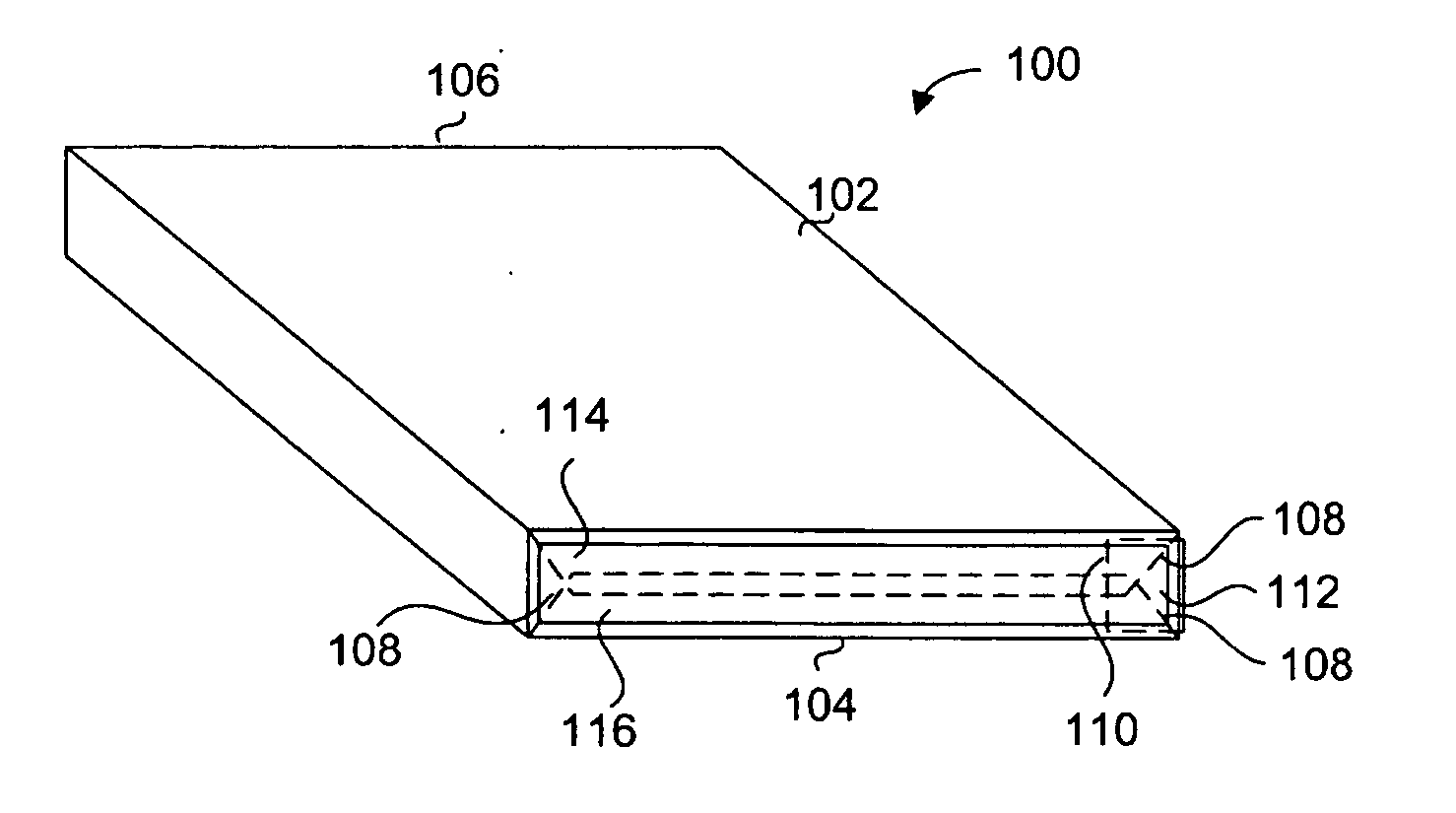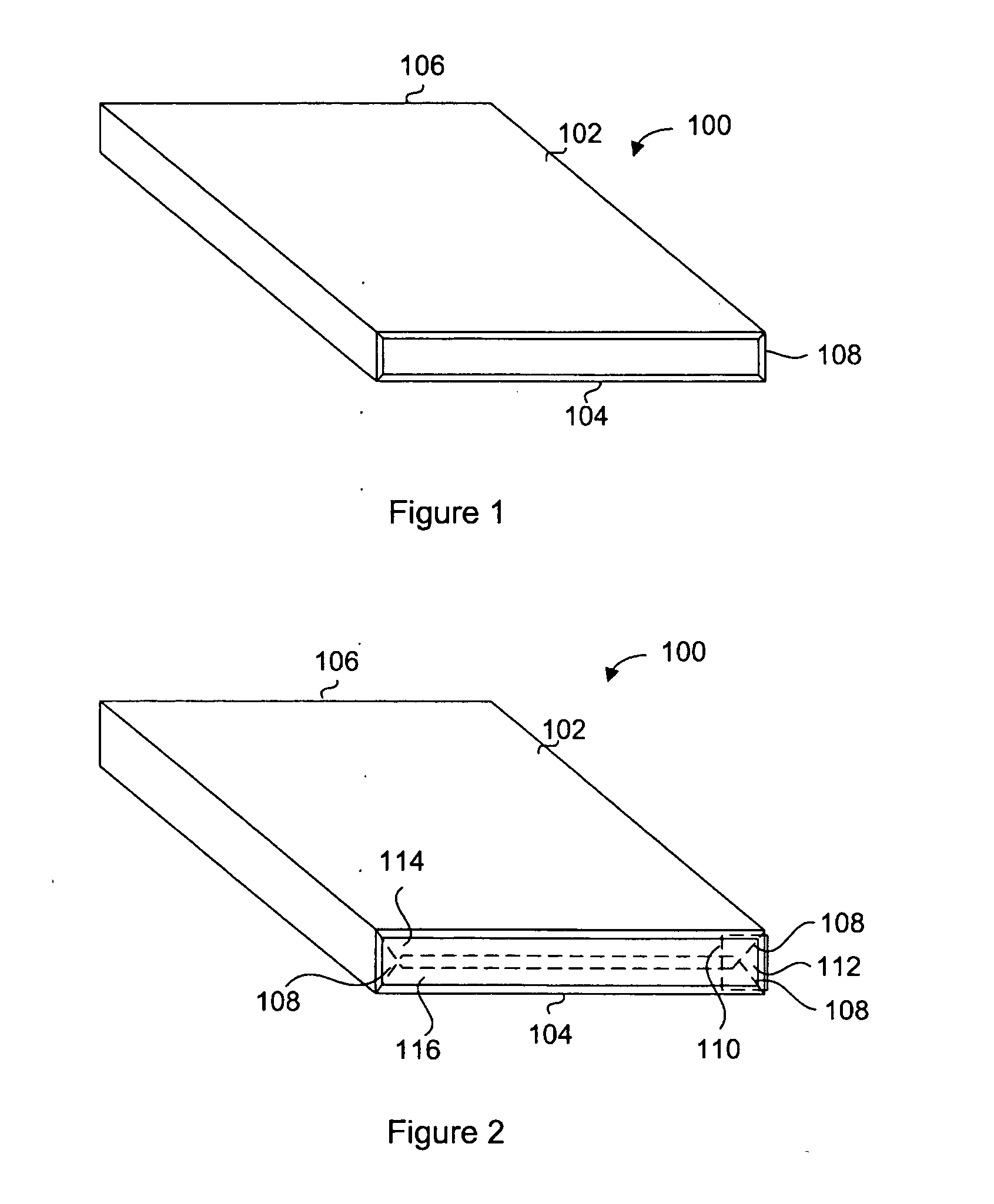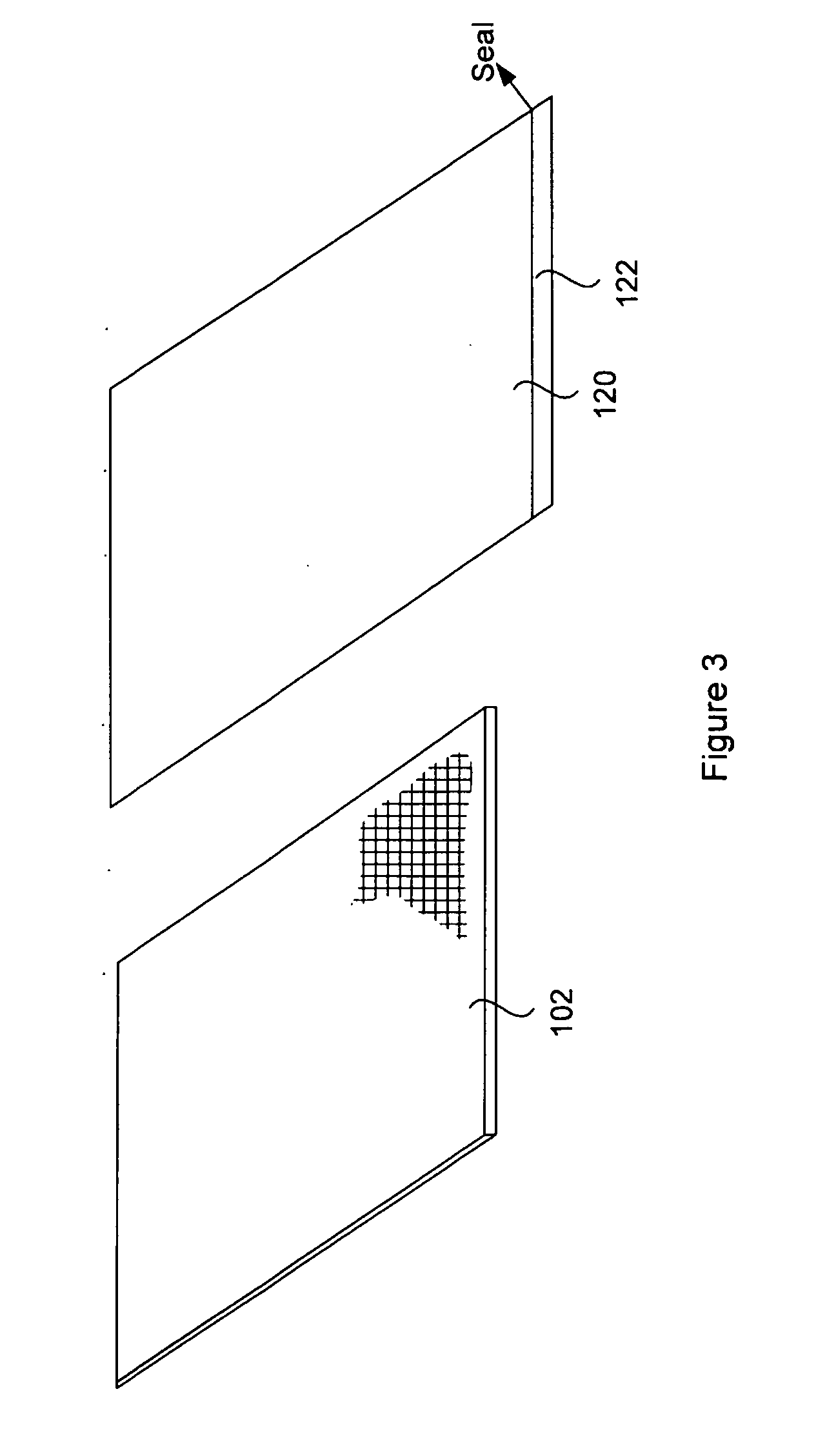While Symons teaches a means for creating a sack with less material, the simple heat seal typically does not provide
structural rigidity.
When a filled bag is rotated so that the sealed end is substantially bearing the load, the heat sealed section of the two fabric pieces must bear all the load, which puts great stress on the seal itself.
As a result, the choice to not fold over the ends of a tubular section of fabric results in both a loss of rigidity and a loss of end strength.
Polyethylene is not typically used in oriented fabrics and thus does not typically provide the strength required for heavy loads.
The use of adhesives limits this bag and its applications.
As a result, the application of an
adhesive makes the bag unusable in applications where the contents for storage are provided at high temperatures.
Though McTaggart does teach the sealing of an oriented
polyethylene film, the resulting sealed film cannot be used in the production of sacks and bags that are used to contain heavy loads, as the oriented film is insufficiently strong.
This results in the base closure lock bridging the space left vacant by the base side flaps.
As earlier described, the use of an
adhesive limits the applications for which the sack can be used.
As described above, the use of an
adhesive, such as that described in Achelpohl et al., typically provides a seal that is insufficiently strong for use in hot fill environments.
While being sandwiched, the heat from the filled
polypropylene causes the boundary between the sheet and the web to become insignificant.
Though one option for adhering the coversheet is the use of adhesive compounds such as glue, it has been found that the warm packing of
cement, a common content for box bottomed tape fabric sacks, introduces the
cement at a temperature that melts the glue, and results in the weakening of the coversheet bond.
As a result, gluing of a coversheet is not considered feasible, and the thermal attachment of a tape fabric cover sheet is employed.
Adhesives that do not melt in this temperature range are typically considered to be too expensive to be cost effective.
Unfortunately, the plastic fabric tapes are susceptible to heat in a manner unrelated to causing holes.
During the heating process to adhere the coversheet the monoaxial orientation of the molecular chains in the tapes can be lost, resulting in loss of fabric strength.
Unless specific equipment is used, unreliable bonds can be formed and defective sacks will be manufactured therefrom.
Further adding to the cost of manufacturing plastic fabric tape sacks is the equipment required for manufacturing the plastic tapes.
Alternate methods of attaching the coversheet have typically been viewed as undesirable.
As discussed above, gluing the coversheet is unsuitable in cases where the sacks are to be warm filled, as the adhesives used in this process tend to dissolve at the produced temperatures.
Though advanced adhesives can be used, they are typically more expensive, and are thus considered relatively undesirable.
Stitching a laminated coversheet to a laminated fabric sack will adhere the coversheet with sufficient strength, but the stitching perforates the sack and thus reduces the impermeability of the sack achieved through lamination.
Though the stitches can be covered by an adhesive tape, this introduces another expense which is undesirable.
While plastic tapes are a suitable material for sacks, they are not abundantly available in certain parts of the world, especially in third world countries where industrial development drives the need for large amounts of inexpensive high volume packaging.
Although paper is an alternative material to plastic, trees required to make paper can be scarce and their use in the manufacture of paper is environmentally detrimental.
The highly automated
processing required to produce reliable box bottom sacks made from monoaxially oriented tape fabrics, is considered cost effective in some parts of the world, but in many parts of the world, the material costs are considered to be high, as are both the cost of the machinery, and the cost of a reliable power supply required to keep the process operating efficiently.
Thus, it would be desirable to provide a box bottomed sack or bag that can be created without strict reliance on the use of laminated woven tape fabric, requiring difficult to implement coversheet attachment.
 Login to View More
Login to View More  Login to View More
Login to View More 


